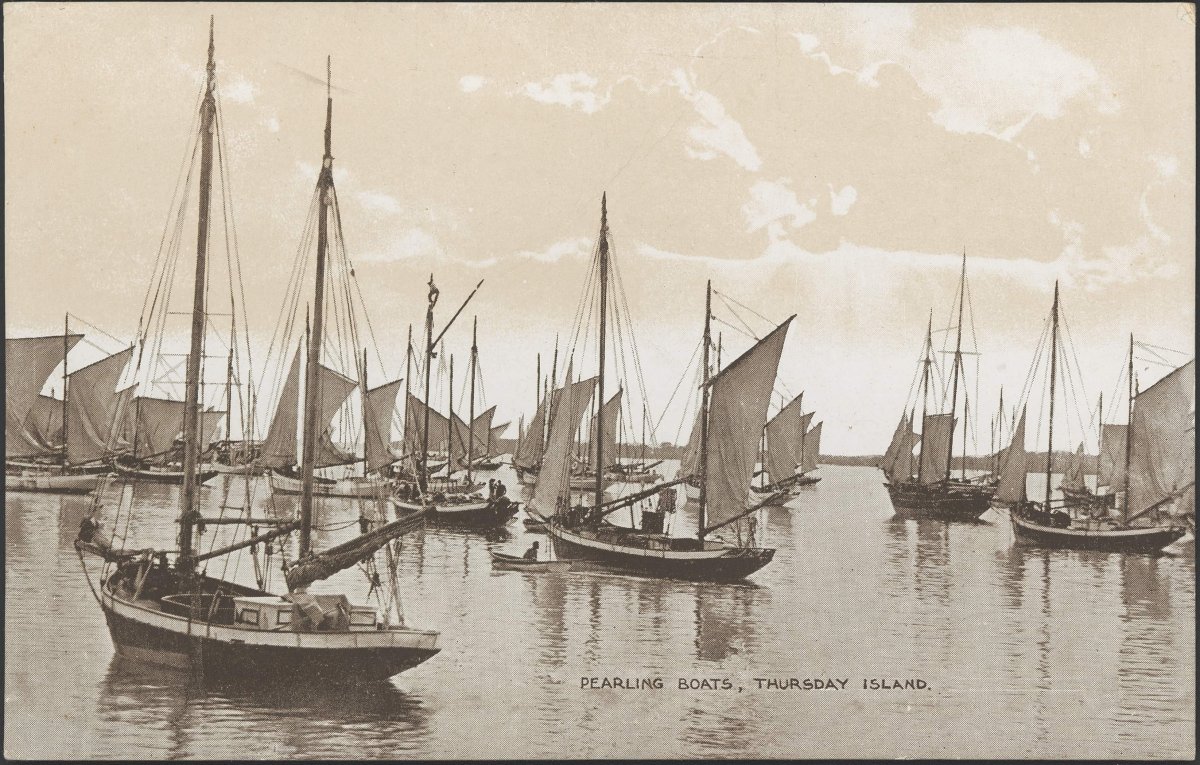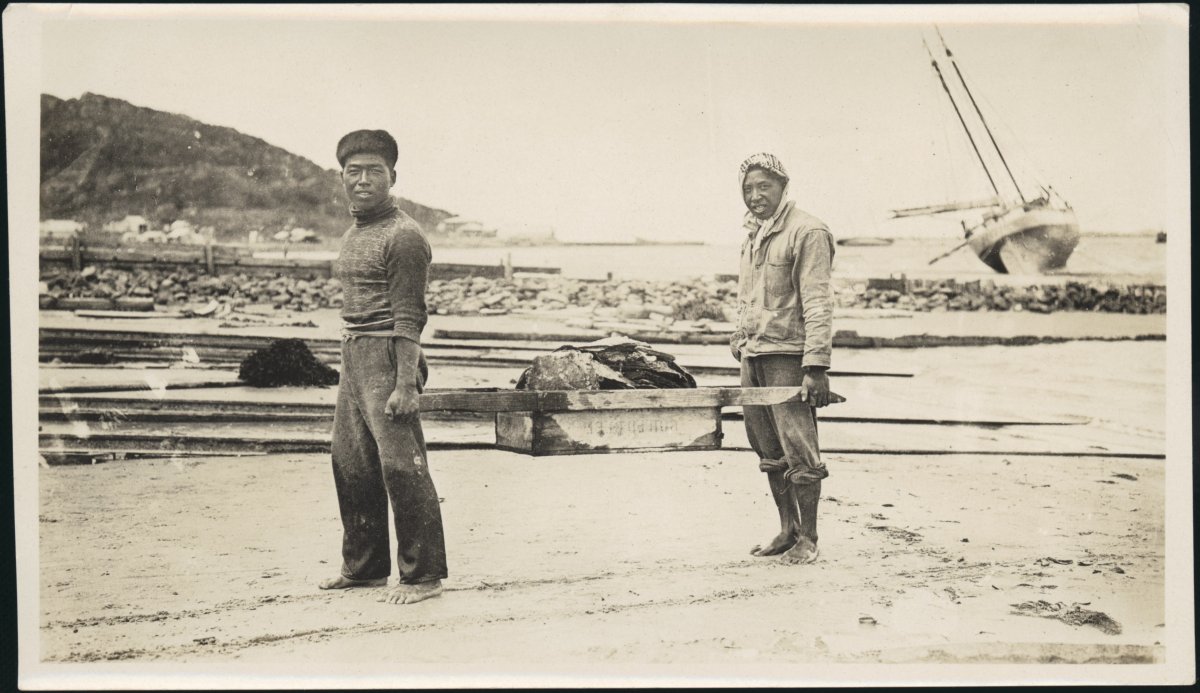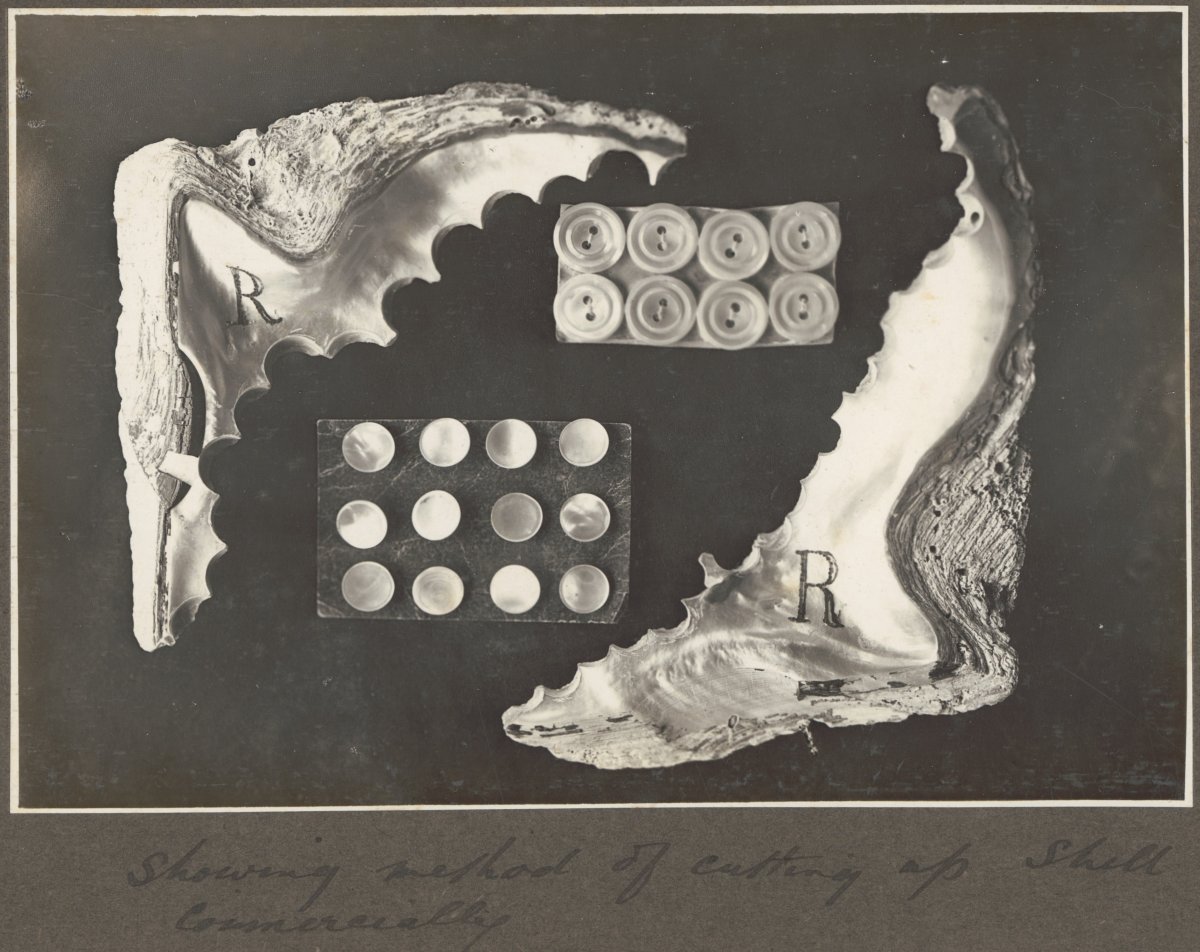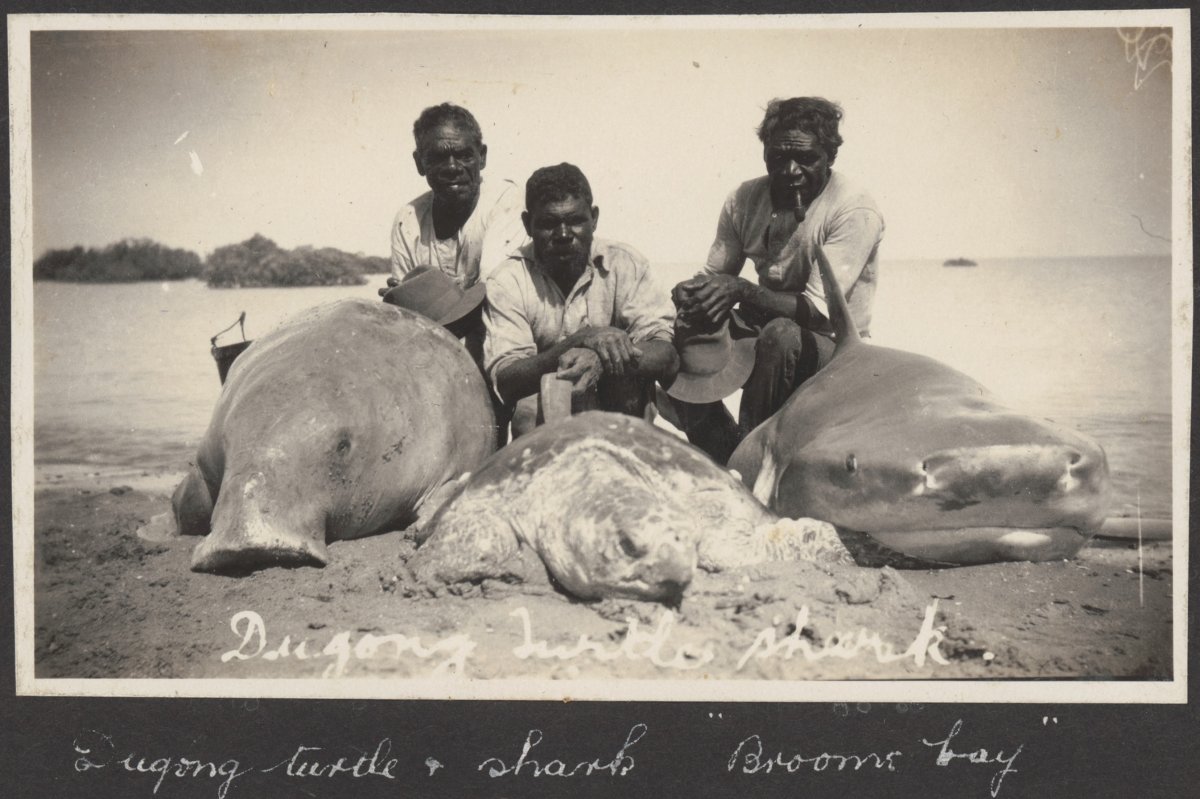Introduce the concept of caught and sold products by asking students to form small groups and identify three products they believe can be caught and sold today. Provide the groups with the below National Library historical images of pearling in the Torres Strait.
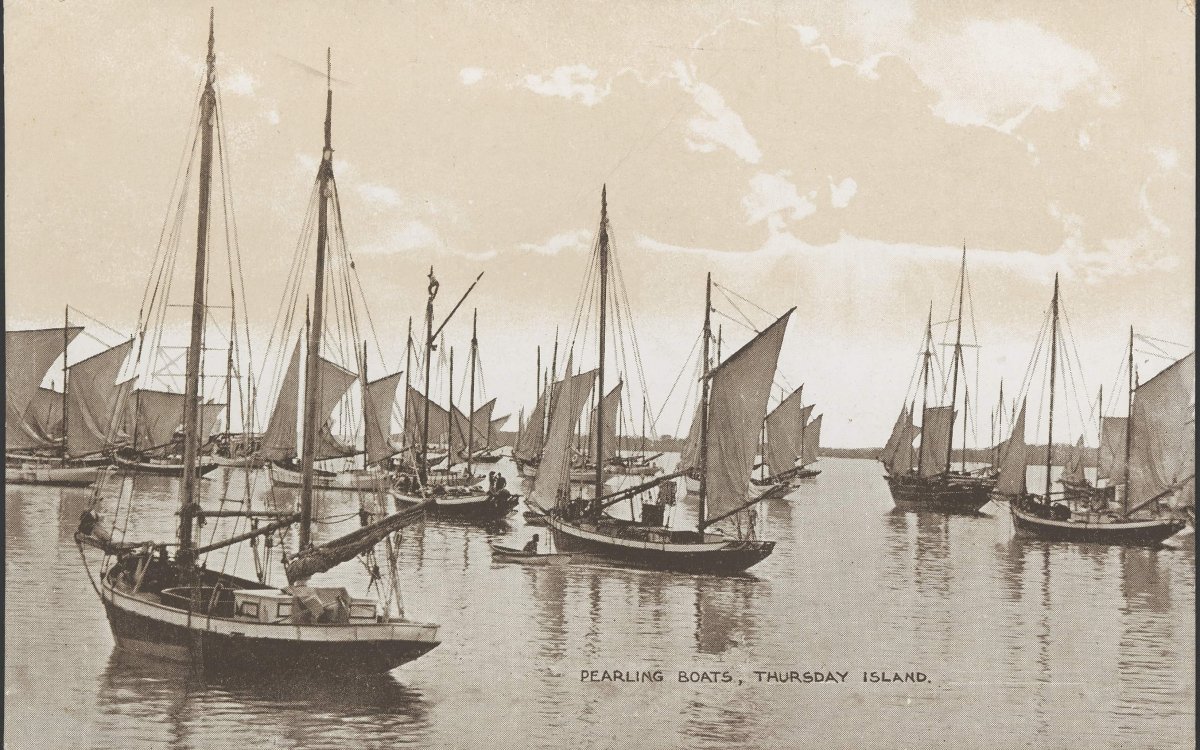
British Manufacture. (1918). Pearling boats, Thursday Island, [ca. 1918] [picture]. http://nla.gov.au/nla.obj-148875027
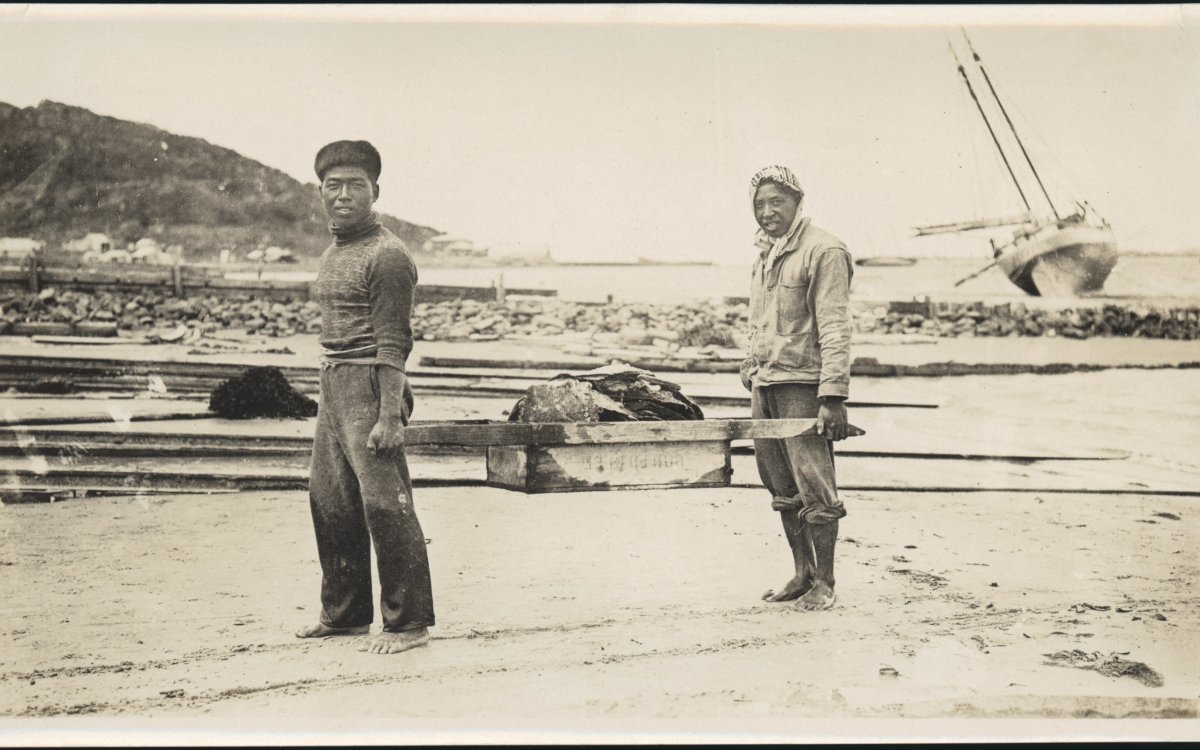
(1899). [Thursday Island pearl shellers, Queensland] [picture]. http://nla.gov.au/nla.obj-149656819

Yonge, C. M. (Charles Maurice), 1899-1986. (1928). Pearl diver ready to descend into the water, Thursday Island, Queensland, ca. 1928 [picture] / Charles Maurice Yonge. http://nla.gov.au/nla.obj-145078475

Porcher, Edwin Augustus, -1878. (1845). Pacific Ocean, a native canoe meeting strangers off the Murray Islands [picture] / [Edwin Augustus Porcher]. http://nla.gov.au/nla.obj-135130151

Yonge, C. M. (Charles Maurice), 1899-1986. (1928). Murray Island cutter at Badu Island, Queensland, ca. 1928 [picture] / Charles Maurice Yonge. http://nla.gov.au/nla.obj-145054763
The pearling industry was a significant historical activity for the Torres Strait region and for much of Northern Australia. Beginning well before European settlement, it continued as a major industry until the middle of the twentieth century. Pearling in the Torres Strait region involved Torres Strait Islanders or foreigners who arrived as part of the 'pearling rush' including Malay, Japanese, Samoan, Niuean, and Rotuman workers who dived for non-Torres Strait owned companies. The process involved divers taking pearls at the sea floor and returning to a boat where the pearl was dumped. The main objective of using pearls was to make buttons. The pearl shell would be split to reveal two pearl plates that were sorted, polished and to cut. Holes were then added for the new buttons to be attached to clothing.
The pearling industry was a significant historical activity for the Torres Strait region and for much of Northern Australia. Beginning well before European settlement, it continued as a major industry until the middle of the twentieth century. Pearling in the Torres Strait region involved Torres Strait Islanders or foreigners who arrived as part of the 'pearling rush' including Malay, Japanese, Samoan, Niuean, and Rotuman workers who dived for non-Torres Strait owned companies. The process involved divers taking pearls at the sea floor and returning to a boat where the pearl was dumped. The main objective of using pearls was to make buttons. The pearl shell would be split to reveal two pearl plates that were sorted, polished and to cut. Holes were then added for the new buttons to be attached to clothing.
Explore the images using the following questions:
- Can you identify pearls in these images? What can they be used for?
- What do you think the roles of Torres Strait Islanders were at this time?
- Consider the position of Torres Strait Islanders in the marine industry during this time period. Were they able to practice a cultural method of traditional marine management?
After students have identified pearls you may provide the following photographs of the cut pearl shells and pearl buttons.
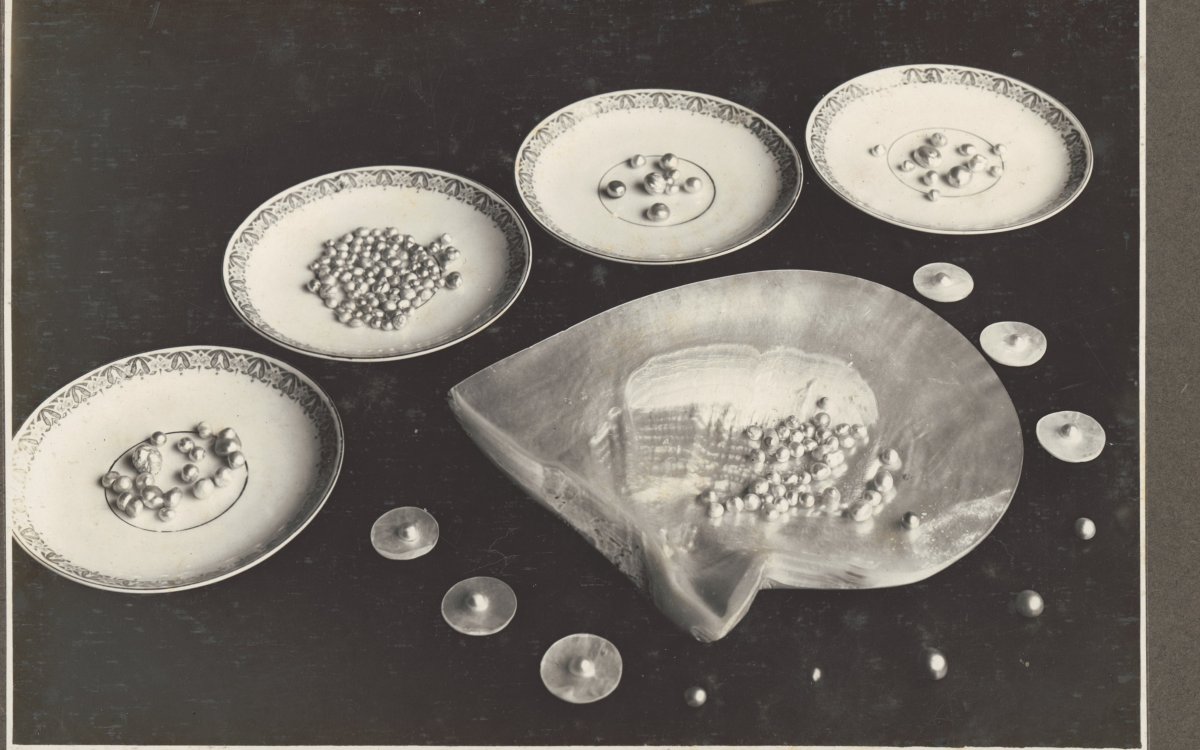
Hurley, Frank, 1885-1962. (1921). Pearls from Thursday Island [picture] / Frank Hurley. http://nla.gov.au/nla.obj-149362726

Hurley, Frank, 1885-1962. (1921). [Cut shell] showing the method of cutting shells commercially [picture] / Frank Hurley. http://nla.gov.au/nla.obj-149364077
Discuss 'button pearls' and the economic benefits they have for the Torres Strait region taking into consideration its remote geographical location.
Ask students to consider the end of the pearling industry in the Torres Strait. What benefits might this have had to Torres Strait Islander people regarding environmental management.
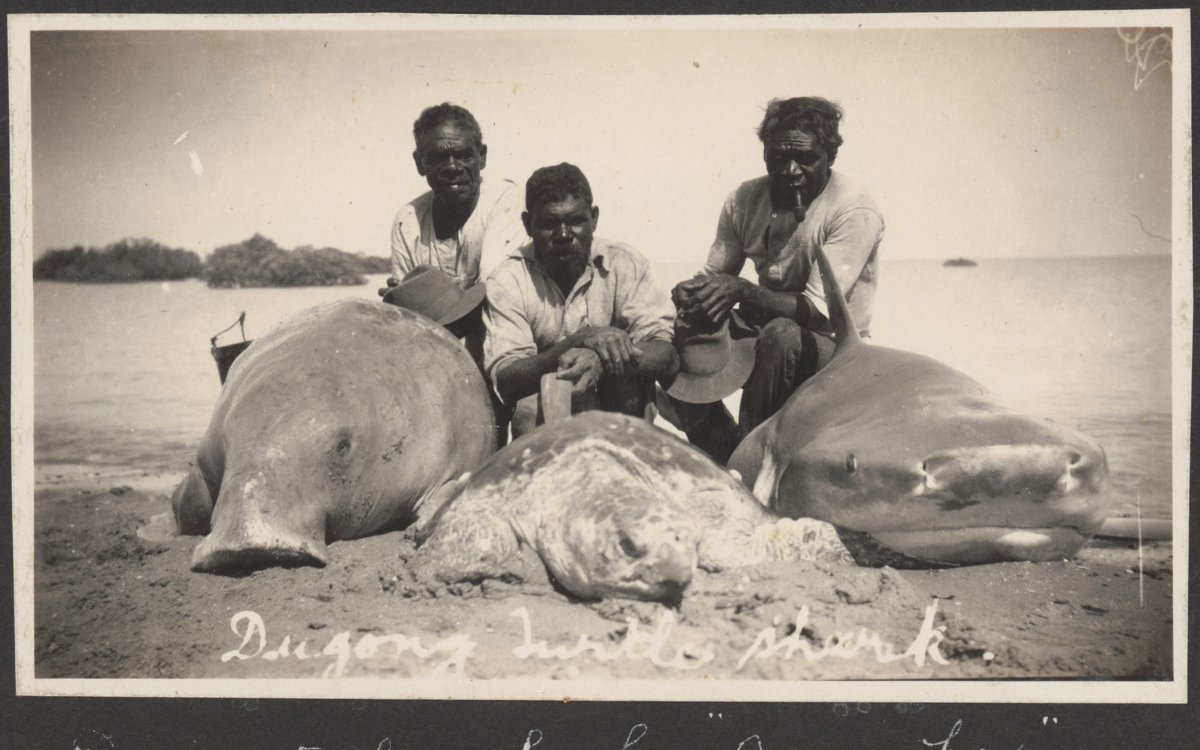
Bourne, R. A & Bourne, R. A. (1926). Three Aboriginal men with their catch of a dugong, turtle and shark, Broome, Western Australia, ca. 1926 [picture] / photos by R. A. Bourne. http://nla.gov.au/nla.obj-138407882
Current Environmental Management plans for the Torres Strait region ensure a sustainable level of Dugong and Turtle. Dugong and Turtle are a culturally significant and primary food source for Torres Strait Islander people in the region. In recent years management plans that aligned with cultural practices were put in place to ensure a sustainable amount of wildlife remains available. Further details about such practices can be found on Protected Zone Joint Authority (PZJA) website.
Current Environmental Management plans for the Torres Strait region ensure a sustainable level of Dugong and Turtle. Dugong and Turtle are a culturally significant and primary food source for Torres Strait Islander people in the region. In recent years management plans that aligned with cultural practices were put in place to ensure a sustainable amount of wildlife remains available. Further details about such practices can be found on Protected Zone Joint Authority (PZJA) website.
Introduce the above National Library photograph of three Aboriginal men with their catch of a Dugong, Turtle and Shark. Explore the image using the following questions:
- Ask students what the purpose of their catch is (it is primarily a food source).
- How this is different from pearling?
Ask the student groups to list or use mind maps to identify reasons for implementing management plans in the idea of continuing food sources. You may also wish to provide students a print out or use a smart screen of the Protected Zone Joint Authority (PZJA) website regarding Torres Strait Island region management plans. The website has the appropriate material to aid students in providing the appropriate answers and enable discussion around Turtle and Dugong management in the Torres Strait.
Conclude by asking a student from each group to provide a summary of the importance of Dugong and Turtle management in the Torres Strait region. At your discretion you can allow students to further discuss why commercial industries such as pearling in that time period that didn’t have a management plan can negatively affect the local environment disparate from Aboriginal and Torres Strait Islander management plans then and continued today for continuing sustainability.
